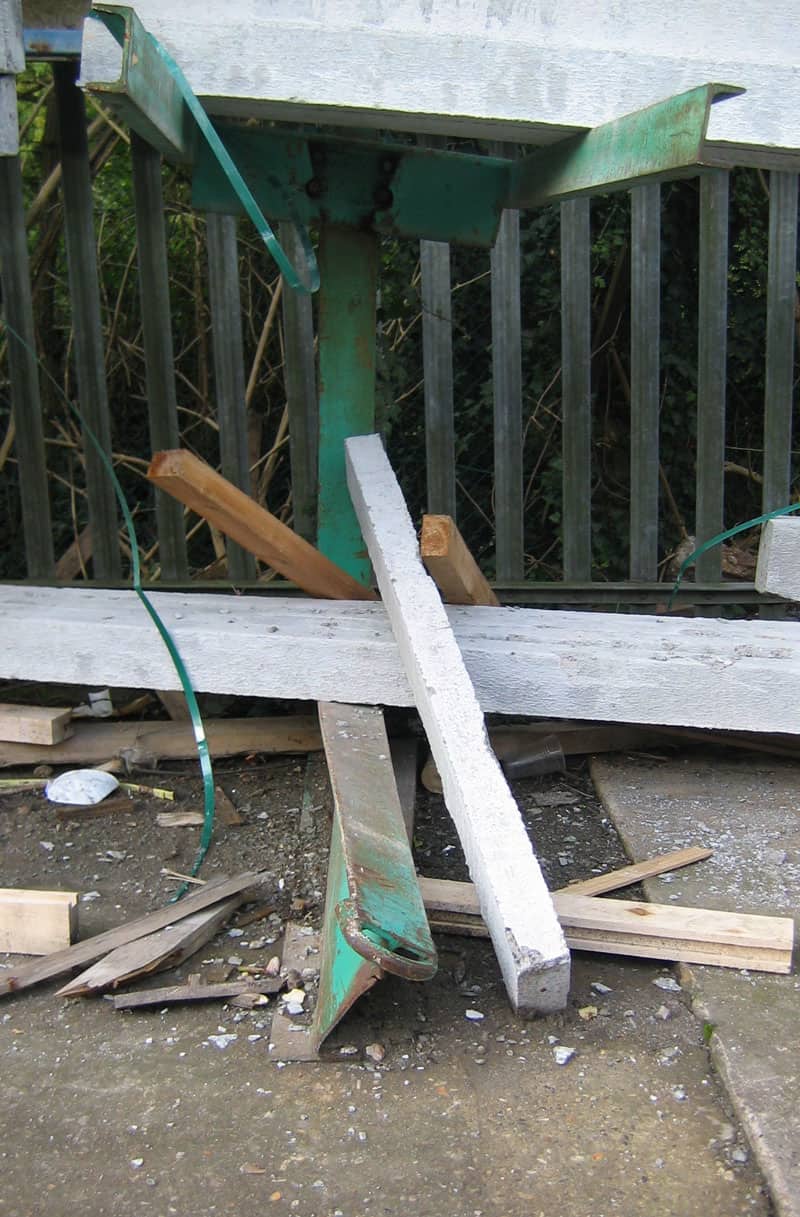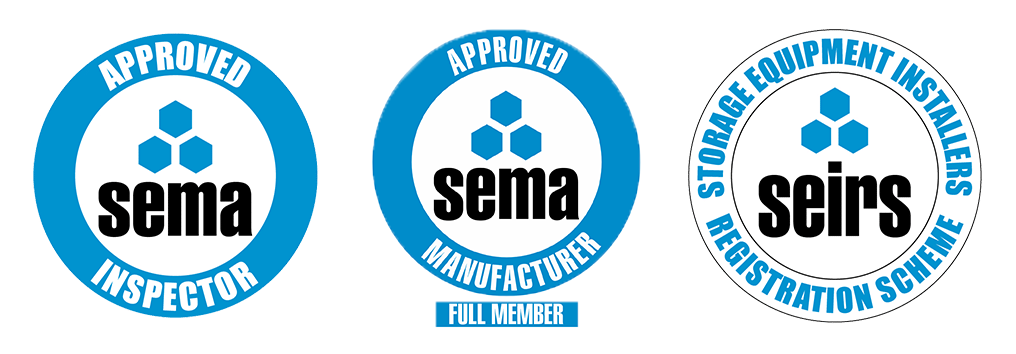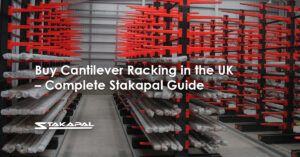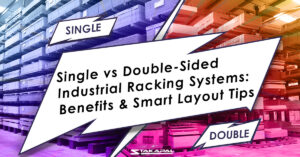The importance of Racking Inspections
Are racking inspections necessary? It is usually an Environmental Health Officer (EHO) from the local council, or a Health and Safety Executive Inspector, who demands that a company obtain a racking inspection of its cantilever racking by a ‘technically competent person’. Cantilever Racking is a storage system usually utilised to store long and irregular or even awkward-shaped products that cannot be accommodated in Pallet Racking.
Often the inspection reveals “Red Risks” which require immediate offloading of those racks or locations. Typically the response of the client when asked to carry this out, is that the situation has been “like that for years” and that “nothing has happened yet”.
Often this is true and therefore it is important to understand why racks and components that have been overloaded or damaged have not failed and resulted in a collapse.
There is usually more than one reason for this and a combination of factors are in play, preventing a dangerous occurrence:
- Often the Cantilever Rack is only partly loaded. The nature of stock levels rising and falling depending on trading conditions, seasonal conditions, availability etc, typically results in utilisation levels rarely rising above 80%. This often provides an increase in the factors of safety present on a rack or system basis.
- The stock densities or weights are often lower than allowed for. This can be due to customers overstating the actual figures either mistakenly or deliberately, or the supplier overestimating the figures for the same reasons.
- Stresses redistribute through the structure creating a stable system albeit one in danger of collapse if other factors change.
- Materials used in the production of the racking happen to all be on the high-end of their thickness tolerances. All commercially produced steels have a thickness tolerance which is plus or minus an amount depending on the type and specification of the raw material. Many racks are designed on a statistical average figure based on statistical probability. It should be borne in mind that there is then an equal chance that instead of the materials being at the high-end of their tolerances they are all at the low-end.

Are Racking Inspections necessary?
If, however, the combinations of factors that have prevented the rack or component from failing change and create an adverse overall effect, then the conditions for collapse to occur may all be in place and then sudden failure can result.
The racking inspector in reality is not being ‘too fussy’ when issuing Red Risks, they are simply highlighting that the luck that has been enjoyed preventing failure of those components or racks may at some time run out and then…. Watch out! It may be too late!

Stakapal are full members of SEMA (Storage Equipment Manufacturers Association), with our installation and inspection teams fully SARI (SEMA Approved Rack Inspector), and SEIRS (Storage Equipment Installers Registration Scheme) registered.
EXCELLENTTrustindex verifies that the original source of the review is Google. The team we had here at James Latham Hemel Hempstead were great. Lead by Sam they worked fast and were very polite and very efficient
Owner's reply
Hi, Thanks so much for your great feedback! We’re glad you had a good experience and would love to hear from you again soon. We look forward to serving you again!Posted onTrustindex verifies that the original source of the review is Google. Install team were fantastic from start to finish. Worked hard throughout and were very accommodating even when faced with planning failures and an ever changing racking set up.
Owner's reply
Hi Craig, We truly appreciate your positive feedback. It's always great to hear that our team is making a difference. Thank you for taking the time to share your thoughts with us.Posted onTrustindex verifies that the original source of the review is Google. Extremely professional company supply and fit high quality pallet racking. Fitting team were excellent ensuring positioning was exactly has required. Arrived on time and completed the work to an exceptional standard.
Owner's reply
Hi Darren, Thank you so much for your kind feedback! We are really glad to hear you had a positive experience. It means a lot to us!Posted onTrustindex verifies that the original source of the review is Google. Great Service from Sam, Owen and Richard! Would highly recommend
Owner's reply
Hi Nick, thank you so much for your kind feedback! We are really glad to hear you had a positive experience. It means a lot to us!Posted onTrustindex verifies that the original source of the review is Google. Great guys who installed our rack very friendly and helpfull A1 ,steve hart perrinandrowe
Owner's reply
Hi Steven, thank you so much for your kind feedback! We are really glad to hear you had a positive experience. It means a lot to us!Posted onTrustindex verifies that the original source of the review is Google. Excellent service, quality and communication from the very start to finish. They will support you and guide you, query and give you pushback if something does not make sense, but ultimately help and respect your decisions too to make it the best success it can be. They are also very flexible with timelines to work around other projects in the building site, whilst going the extra mile and fair. A big shoutout especially to James and the wider team.
Owner's reply
Hi Noam, Thank you so much for your great feedback! We are glad you had a good experience and would love to hear from you again soon. We look forward to serving you again!Posted onTrustindex verifies that the original source of the review is Google. We recently had our racking installed by Stakapal and couldn’t be more pleased with the service. From start to finish, the team was quick, efficient, and highly professional. Everything was carried out exactly as planned, and they even made some on-the-spot adjustments to tailor the installation to our needs on the day. The whole process was smooth, well-organised, and completed to a very high standard. We’re extremely happy with the results and would highly recommend Stakapal to anyone looking for reliable and expert racking solutions.
Owner's reply
Hi Damian, Thank you so much for your great feedback! We’re glad you had a good experience and would love to hear from you again soon. Don’t hesitate to reach out if there's ever anything we can do for you.Posted onTrustindex verifies that the original source of the review is Google. Would like to thank Stakapal for another efficient inspection of our racking system at Hanson plywood, its great that we have a fantastic working connection with each other. Rob Yeomans who visits our site for any alterations is very helpful, polite and also very good at his profession, we are very happy to continue our good working relationship for many years to come.
Owner's reply
Hi John, Thank you! Your kind words have really made our day. We are thrilled you are happy with our service and we look forward to serving you again!Posted onTrustindex verifies that the original source of the review is Google. We had racking fitted in our timber yard and the 2 fitters were brilliant expert job done and very professional, would recommend .
Owner's reply
Hi Mark, Thanks so much for your great feedback! We’re glad you had a good experience and would love to hear from you again soon. We look forward to serving you again!Posted onTrustindex verifies that the original source of the review is Google.
Owner's reply
Hi Steven, thank you so much for your great feedback! We are glad you had a good experience and would love to hear from you again soon.


